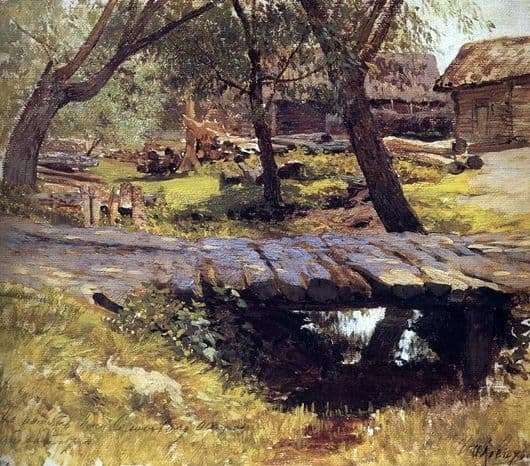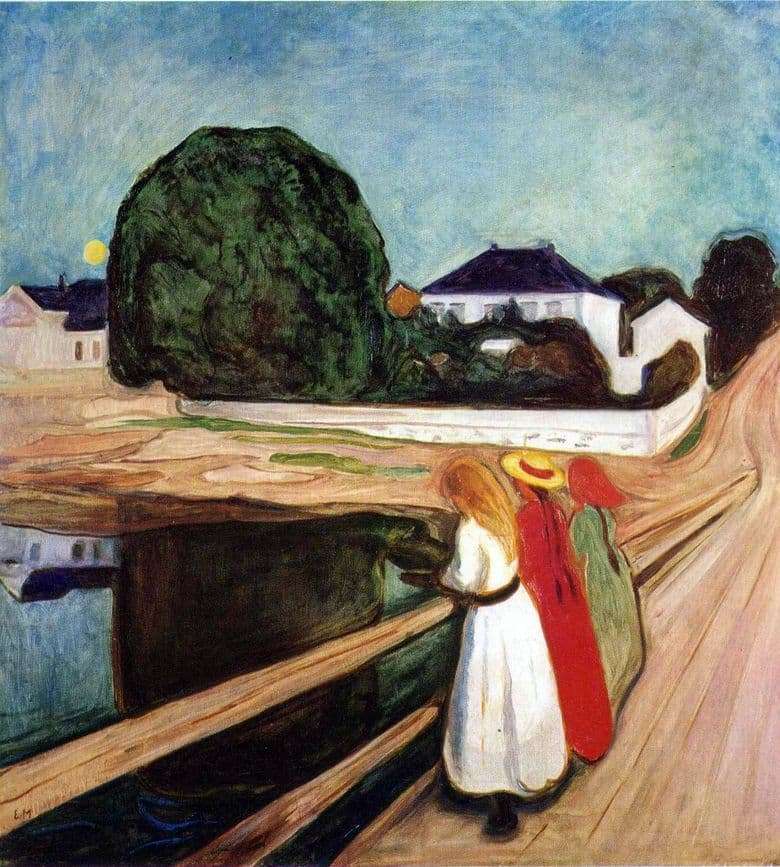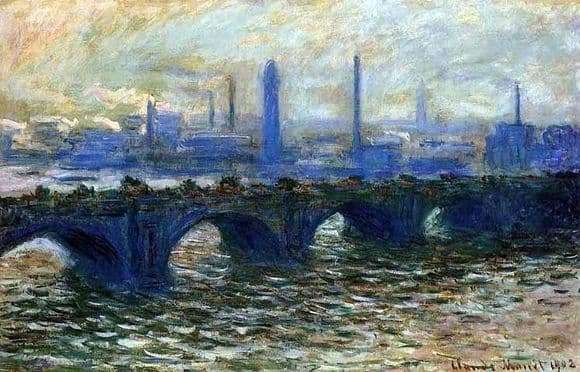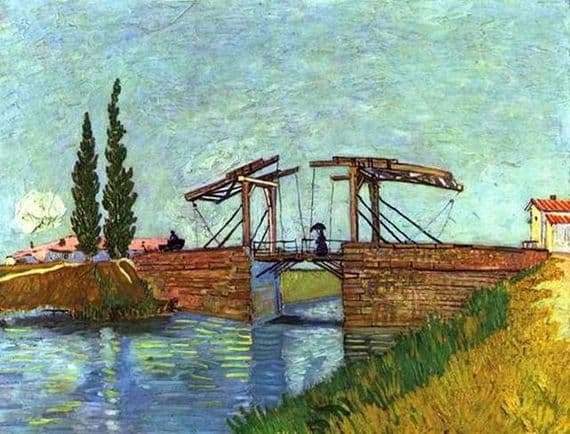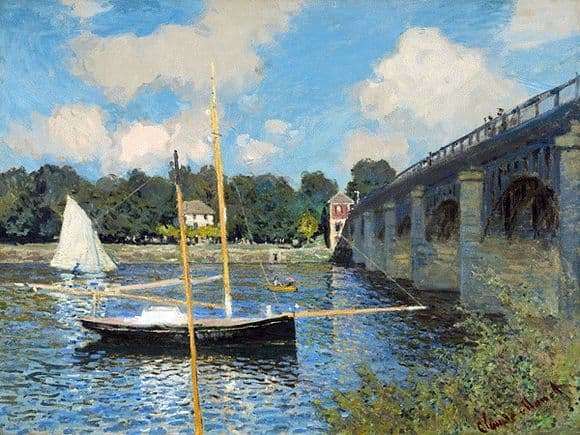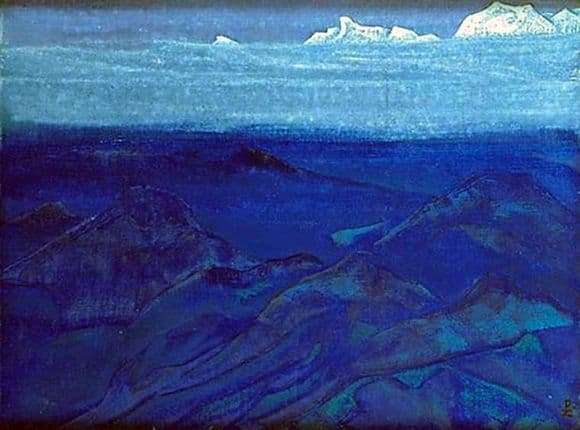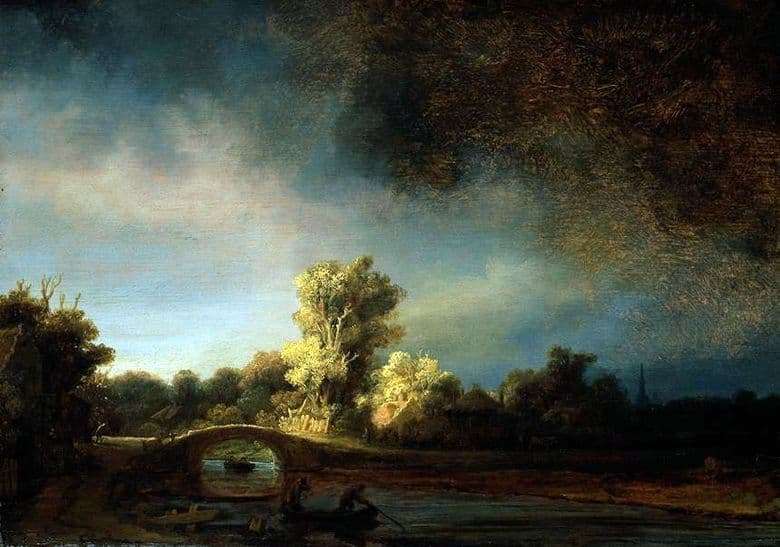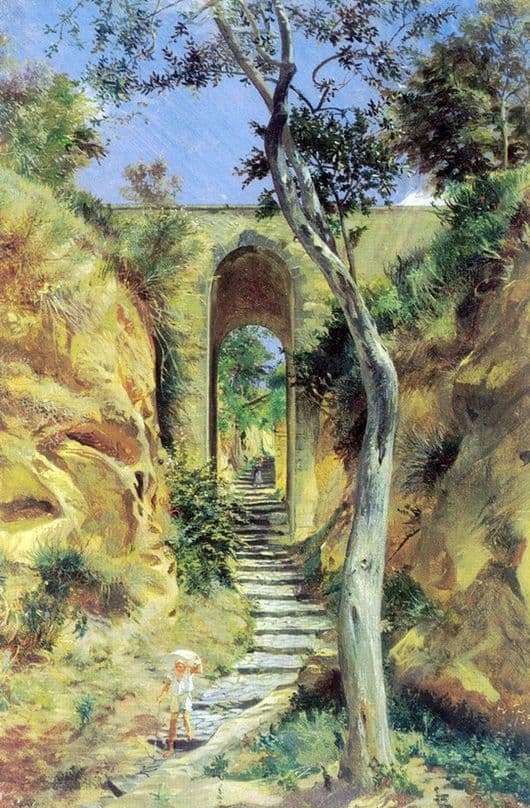
In this picture, before the eyes of the reader, a wonderful mountain landscape appears. The whole picture is written in warm yellow tones, which suggests the thought of a sunny place, of eternal summer and warmth. The nature of Italy is unusual – the viewer understands that the landscape was not written in Russia at all.
Among the two mountains in a small gorge there is a paved staircase. By the appearance of the stairs one can understand that it was built for a long time. The masonry in some places crumbled, but it does not spoil the beautiful view, but only gives it a particularly chic.
In the foreground closest to the viewer you can see a gray-haired man in white clothes. A man walks down the stairs carrying a white bag on his back. Perhaps there is grain in it. The bag is very heavy – the man goes half-bent. He has a cane in his other hand – he leans on it as he descends the stairs.
In the background you can see the silhouettes of a couple in love who are walking in this area, enjoying the sunny weather and beautiful views. The couple has just passed under the bridge and climbs up the stairs.
The arch is rather high, although, initially it seems that its height is not so great. The bridge connects two mountains to each other. The whole bridge is made of yellow brick. There are no people at the top of the bridge – perhaps they are not visible because of the height. Or maybe everyone who wants to take a walk on this day chose to take a walk in the lowlands, where the coolness of the shade of the trees soars.
The landscape does not strike with special vegetation – in the foreground we see a lonely tree. The mountains are overgrown with low shrubs and grass that has already shrunk and turned yellow in the sun. Above the landscape – high blue sky. It is clean and bright. Meanwhile, the picture does not show the horizon line at all – the bridge cuts the whole reality in half in front of the viewer – into the life that is in front of the bridge, and that beyond the bridge and not open to the viewer.
Description of the painting by Nicholas Ge “Bridge in Vico”
